- Home
- J. K. Rowling
Quidditch Through the Ages Page 4
Quidditch Through the Ages Read online
Page 4
Chapter Eight
The Spread of Quidditch Worldwide
Europe
Quidditch was well established in Ireland by the fourteenth century, as proved by Zacharias Mumps’s account of a match in 1385: ‘A team of Warlocks from Cork flew over for a game in Lancashire and did offend the locals by beating their heroes soundly. The Irishmen knew tricks with the Quaffle that had not been seen in Lancashire before and had to flee the village for fear of their lives when the crowd drew out their wands and gave chase.’
Diverse sources show that the game had spread into other parts of Europe by the early fifteenth century. We know that Norway was an early convert to the game (could Goodwin Kneen’s cousin Olaf have introduced the game there?) because of the verse written by the poet Ingolfr the Iambic in the early 1400s:
Oh, the thrill of the chase as I soar through the air
With the Snitch up ahead and the wind in my hair
As I draw ever closer, the crowd gives a shout
But then comes a Bludger and I am knocked out.
Around the same time, the French wizard Malecrit wrote the following lines in his play Hélas, j’ai Transfiguré mes Pieds (‘Alas, I’ve Transfigured My Feet’):
GRENOUILLE : I cannot go with you to the market today, Crapaud.
CRAPAUD : But Grenouille, I cannot carry the cow alone.
GRENOUILLE : You know, Crapaud, that I am to be Keeper this morning. Who will stop the Quaffle if I do not?
The year 1473 saw the first ever Quidditch World Cup, though the nations represented were all European. The nonappearance of teams from more distant nations may be put down to the collapse of owls bearing letters of invitation, the reluctance of those invited to make such a long and perilous journey, or perhaps a simple preference for staying at home.
The final between Transylvania and Flanders has gone down in history as the most violent of all time and many of the fouls then recorded had never been seen before — for instance, the Transfiguration of a Chaser into a polecat, the attempted decapitation of a Keeper with a broadsword and the release, from under the robes of the Transylvanian Captain, of a hundred blood-sucking vampire bats.
The World Cup has since been held every four years, though it was not until the seventeenth century that non-European teams turned up to compete. In 1652 the European Cup was established, and it has been played every three years since.
Of the many superb European teams, perhaps the Bulgarian Vratsa Vultures is most renowned. Seven times European Cup winners, the Vratsa Vultures are undoubtedly one of the most thrilling teams in the world to watch, pioneers of the long goal (shooting from well outside the scoring area) and always willing to give new players a chance to make a name for themselves.
In France the frequent League winners the Quiberon Quafflepunchers are famed for their flamboyant play as much as for their shocking-pink robes. In Germany we find the Heidelberg Harriers, the team that the Irish Captain Darren O’Hare once famously said was ‘fiercer than a dragon and twice as clever’. Luxembourg, always a strong Quidditch nation, has given us the Bigonville Bombers, celebrated for their offensive strategies and always among the top goal-scorers. The Portuguese team Braga Broomfleet have recently broken through into the top levels of the sport with their groundbreaking Beater-marking system; and the Polish Grodzisk Goblins gave us arguably the world’s most innovative Seeker, Josef Wronski.
Australia and New Zealand
Quidditch was introduced to New Zealand some time in the seventeenth century, allegedly by a team of European herbologists who had gone on an expedition there to research magical plants and fungi. We are told that after a long day’s toil collecting samples, these witches and wizards let off steam by playing Quidditch under the bemused gaze of the local magical community. The New Zealand Ministry of Magic has certainly spent much time and money preventing Muggles getting hold of Maori art of that period which clearly depicts white wizards playing Quidditch (these carvings and paintings arc now on display at the Ministry of Magic in Wellington).
The spread of Quidditch to Australia is believed to have occurred some time in the eighteenth century. Australia may be said to be an ideal Quidditch-playing territory, given the great expanses of uninhabited outback where Quidditch pitches may be established.
Antipodean teams have always thrilled European crowds with their speed and showmanship. Among the best are the Moutohora Macaws (New Zealand), with their famous red, yellow and blue robes and their phoenix mascot Sparky. The Thundelarra Thunderers and the Woollongong Warriors have dominated the Australian League for the best part of a century. Their enmity is legendary among the Australian magical community, so much so that a popular response to an unlikely claim or boast is ‘Yeah, and I think I’ll volunteer to ref the next Thunderer-Warrior game’.
Africa
The broomstick was probably introduced to the African continent by European wizards and witches travelling there in search of information on alchemy and astronomy, subjects in which African wizards have always been particularly skilled. Though not yet as widely played as in Europe, Quidditch is becoming increasingly popular throughout the African continent.
Uganda in particular is emerging as a keen Quidditch-playing nation. Their most notable club, the Patonga Proudsticks, held the Montrose Magpies to a draw in 1986 to the astonishment of most of the Quidditch-playing world. Six Proudstick players recently represented Uganda in the Quidditch World Cup, the highest number of fliers from a single team ever united on a national side. Other African teams of note include the Tchamba Charmers (Togo), masters of the reverse-pass; the Gimbi Giant-Slayers (Ethiopia), twice winners of the All-Africa Cup; and the Sumbawanga Sunrays (Tanzania), a highly popular team whose formation looping has delighted crowds across the world.
North America
Quidditch reached the North American continent in the early seventeenth century, although it was slow to take hold there owing to the great intensity of anti-wizarding feeling unfortunately exported from Europe at the same time. The great caution exercised by wizard settlers, many of whom had hoped to find less prejudice in the New World, tended to restrict the growth of the game in its early days.
In later times, however, Canada has given us three of the most accomplished Quidditch teams in the world: the Moose Jaw Meteorites, the Haileybury Hammers and the Stonewall Stormers. The Meteorites were threatened with disbandment in the 1970s owing to their persistent practice of performing post-match victory flights over neighbouring towns and villages while trailing fiery sparks from their broom tails. The team now confines this tradition to the pitch at the end of each match and Meteorite games consequently remain a great wizarding tourist attraction.
The United States has not produced as many world-class Quidditch teams as other nations because the game has had to compete with the American broom game Quodpot. A variant of Quidditch, Quodpot was invented by the eighteenth-century wizard Abraham Peasegood, who had brought a Quaffle with him from the old country and intended to recruit a Quidditch team. The story goes that Peasegood’s Quaffle had inadvertently come into contact with the tip of his wand in his trunk, so that when he finally took it out and began to throw it around in a casual manner, it exploded in his face. Peasegood, whose sense of humour appears to have been robust, promptly set out to recreate the effect on a series of leather balls and soon all thought of Quidditch was forgotten as he and his friends developed a game which centred on the explosive properties of the newly renamed ‘Quod’.
There are eleven players a side in the game of Quodpot. They throw the Quod, or modified Quaffle, from team member to member, attempting to get it into the ‘pot’ at the end of the pitch before it explodes. Any player in possession of the Quod when it explodes must leave the pitch. Once the Quod is safely in the ‘pot’ (a small cauldron containing a solution which will prevent the Quod exploding), the scorer’s team is awarded a point and a new Quod is brought on to the pitch. Quodpot has had some success as a minority sport in Europe, th
ough the vast majority of wizards remain faithful to Quidditch.
The rival charms of Quodpot notwithstanding, Quidditch is gaining popularity in the United States, Two teams have recently broken through at international level: the Sweetwater All-Stars from Texas, who gained a well-deserved win over the Quiberon Quafflepunchers in 1993 after a thrilling five-day match, and the Fitchburg Finches from Massachusetts, who have now won the US League seven times and whose Seeker, Maximus Brankovitch III, has captained America at the last two World Cups.
South America
Quidditch is played throughout South America, though the game must compete with the popular Quodpot here as in the North. Argentina and Brazil both reached the quarter-finals of the World Cup in the last century. Undoubtedly the most skilled Quidditch nation in South America is Peru, which is tipped to become the first Latin World Cup winner within ten years. Peruvian warlocks are believed to have had their first exposure to Quidditch from European wizards sent by the International Confederation to monitor the numbers of Vipertooths (Peru’s native dragon). Quidditch has become a veritable obsession of the wizard community there since that time, and their most famous team, the Tarapoto Tree-Skimmers, recently toured Europe to great acclaim.
Asia
Quidditch has never achieved great popularity in the East, as the flying broomstick is a rarity in countries where the carpet is still the preferred mode of travel. The Ministries of Magic in countries such as India, Pakistan, Bangladesh, Iran and Mongolia, all of whom maintain a flourishing trade in flying carpets, regard Quidditch with some suspicion, though the sport does have some fans among witches and wizards on the street.
The exception to this general rule is Japan, where Quidditch has been gaining steadily in popularity over the last century. The most successful Japanese team, the Toyohashi Tengu, narrowly missed a win over Lithuania’s Gorodok Gargoyles in 1994. The Japanese practice of ceremonially setting fire to their brooms in case of defeat is, however, frowned upon by the International Confederation of Wizards’ Quidditch Committee as being a waste of good wood.
Chapter Nine
The Development of the Racing Broom
Until the early nineteenth century, Quidditch was played on day brooms of varying quality. These brooms represented a massive advance over their medieval forerunners; the invention of the Cushioning Charm by Elliot Smethwyck in 1820 went a long way towards making broomsticks more comfortable than ever before (see Fig. F). Nevertheless, nineteenth-century broomsticks were generally incapable of achieving high speeds and were often difficult to control at high altitudes. Brooms tended to be hand-produced by individual broom-makers and while they are admirable from the point of view of styling and craftsmanship, their performance rarely matched up to their handsome appearance.
A case in point is the Oakshaft 79 (so named because the first example was created in 1879). Crafted by the broom-maker Elias Grimstone of Portsmouth, the Oakshaft is a handsome broom with a very thick oaken handle, designed for endurance flying and to withstand high winds. The Oakshaft is now a highly prized vintage broom, but attempts to use it for Quidditch were never successful. Too cumbersome to turn at high speed, the Oakshaft never gained much popularity with those who prized agility over safety, though it will always be remembered as the broom used in the first ever Atlantic broom crossing, by Jocunda Sykes in 1935. (Before that time, wizards preferred to take ships rather than trust broomsticks over such distances. Apparition becomes increasingly unreliable over very long distances, and only highly skilled wizards are wise to attempt it across continents.)
The Moontrimmer, which was first created by Gladys Boothby in 1901, represented a leap forward in broom construction, and for a while these slender, ash-handled brooms were in great demand as Quidditch brooms. The Moontrimmer’s principal advantage over other brooms was its ability to achieve greater heights than ever before (and remain controllable at such altitudes). Gladys Boothby was unable to produce Moontrimmers in the quantities Quidditch players clamoured for. The production of a new broom, the Silver Arrow, was welcomed; this was the true forerunner of the racing broom, achieving much higher speeds than the Moontrimmer or Oakshaft (up to seventy miles an hour with a tailwind), but like these it was the work of a single wizard (Leonard Jewkes) and demand far outstripped supply.
The breakthrough occurred in 1926, when the brothers Bob, Bill and Barnaby Ollerton started the Cleansweep Broom Company. Their first model, the Cleansweep One, was produced in numbers never seen before and marketed as a racing broom specifically designed for sporting use. The Cleansweep was an instant, runaway success, cornering as no broom before it, and within a year, every Quidditch team in the country was mounted on Cleansweeps.
The Ollerton brothers were not left in sole possession of the racing-broom market for long. In 1929 a second racing-broom company was established by Randolph Keitch and Basil Horton, both players for the Falmouth Falcons. The Comet Trading Company’s first broom was the Comet 140, this being the number of models that Keitch and Horton had tested prior to its release. The patented Horton—Keitch braking charm meant that Quidditch players were much less likely to overshoot goals or fly offside, and the Comet now became the broom of preference for many British and Irish teams in consequence.
While the Cleansweep—Comet competition became more intense, marked by the release of the improved Cleansweeps Two and Three in 1934 and 1937 respectively, and the Comet 180 in 1938, other broomstick manufacturers were springing up all over Europe.
The Tinderblast was launched on the market in 1940. Produced by the Black Forest company Ellerby and Spudmore, the Tinderblast is a highly resilient broom, though it has never achieved the top speeds of the Comets and Cleansweeps. In 1952 Ellerby and Spudmore brought out a new model, the Swiftstick. Faster than the Tinderblast, the Swiftstick nevertheless has a tendency to lose power in ascent and has never been used by professional Quidditch teams.
In 1955 Universal Brooms Ltd introduced the Shooting Star, the cheapest racing broom to date. Unfortunately, after its initial burst of popularity, the Shooting Star was found to lose speed and height as it aged, and Universal Brooms went out of business in 1978.
In 1967 the broom world was galvanised by the formation of the Nimbus Racing Broom Company. Nothing like the Nimbus 1000 had ever been seen before. Reaching speeds of up to a hundred miles per hour, capable of turning 360 degrees at a fixed point in mid-air, the Nimbus combined the reliability of the old Oakshaft 79 with the easy handling of the best Cleansweeps. The Nimbus immediately became the broom preferred by professional Quidditch teams across Europe, and the subsequent models (1001, 1500 and 1700) have kept the Nimbus Racing Broom Company at the top of the field.
The Twigger 90, first produced in 1990, was intended by its manufacturers Flyte and Barker to replace the Nimbus as market leader. However, though highly finished and including a number of new gimmicks such as an inbuilt Warning Whistle and Self-Straightening Brush, the Twigger has been found to warp under high speeds and has gained the unlucky reputation of being flown by wizards with more Galleons than sense.
Chapter Ten
Quidditch Today
The game of Quidditch continues to thrill and obsess its many fans around the world. Nowadays every purchaser of a Quidditch match ticket is guaranteed to witness a sophisticated contest between highly skilled fliers (unless of course the Snitch is caught in the first five minutes of the match, in which case we all feel slightly short-changed). Nothing demonstrates this more than the difficult moves that have been invented over its long history by witches and wizards eager to push themselves and the game as far as they can go. Some of these are listed below.
Bludger Backbeat
A move by which the Beater strikes the Bludger with a backhanded club swing, sending it behind him or her rather than in front. Difficult to bring off with precision but excellent for confusing opponents.
Dopplebeater Defence
Both Beaters hit a Bludger at the same time for extra power, resulti
ng in a Bludger attack of greater severity.
Double Eight Loop
A Keeper defence, usually employed against penalty takers,

 Harry Potter and the Philosophers Stone
Harry Potter and the Philosophers Stone Harry Potter and the Chamber of Secrets
Harry Potter and the Chamber of Secrets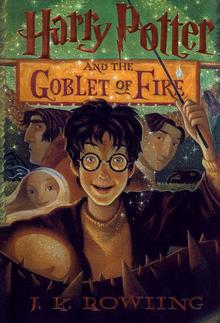 Harry Potter and the Goblet of Fire
Harry Potter and the Goblet of Fire Harry Potter and the Deathly Hallows
Harry Potter and the Deathly Hallows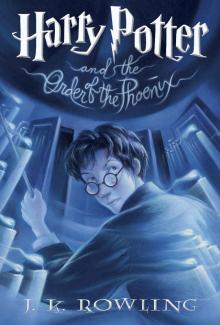 Harry Potter and the Order of the Phoenix
Harry Potter and the Order of the Phoenix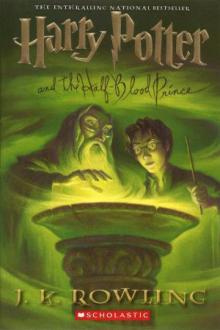 Harry Potter and the Half-Blood Prince
Harry Potter and the Half-Blood Prince Harry Potter and the Prisoner of Azkaban
Harry Potter and the Prisoner of Azkaban Fantastic Beasts and Where to Find Them
Fantastic Beasts and Where to Find Them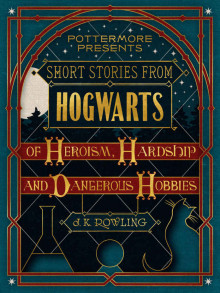 Short Stories from Hogwarts of Heroism, Hardship and Dangerous Hobbies
Short Stories from Hogwarts of Heroism, Hardship and Dangerous Hobbies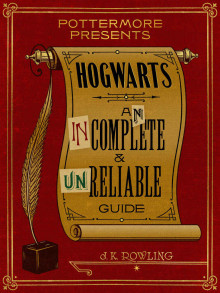 Hogwarts: An Incomplete and Unreliable Guide
Hogwarts: An Incomplete and Unreliable Guide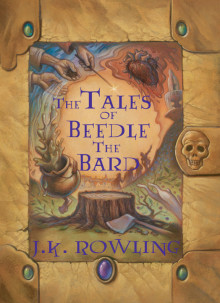 The Tales of Beedle the Bard
The Tales of Beedle the Bard The Casual Vacancy
The Casual Vacancy Harry Potter and the Cursed Child
Harry Potter and the Cursed Child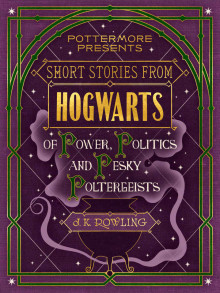 Short Stories from Hogwarts of Power, Politics and Pesky Poltergeists
Short Stories from Hogwarts of Power, Politics and Pesky Poltergeists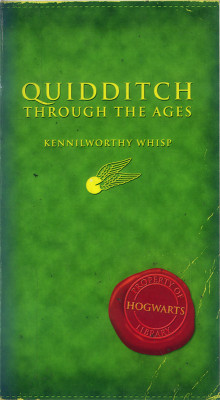 Quidditch Through the Ages
Quidditch Through the Ages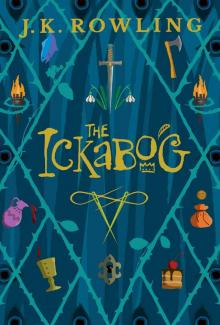 The Ickabog
The Ickabog![Fantastic Beasts, The Crimes of Grindelwald [UK] Read online](http://i1.bookreadfree.com/i/03/19/fantastic_beasts_the_crimes_of_grindelwald_uk_preview.jpg) Fantastic Beasts, The Crimes of Grindelwald [UK]
Fantastic Beasts, The Crimes of Grindelwald [UK]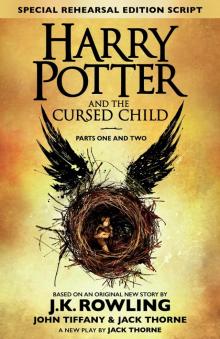 Harry Potter and the Cursed Child: Parts One and Two
Harry Potter and the Cursed Child: Parts One and Two The Prisoner of Azkaban
The Prisoner of Azkaban Fantastic Beasts: The Crimes of Grindelwald
Fantastic Beasts: The Crimes of Grindelwald The Hogwarts Library Collection
The Hogwarts Library Collection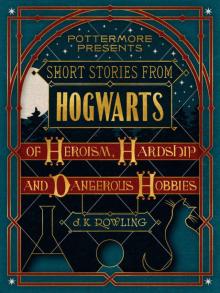 Short Stories from Hogwarts of Heroism, Hardship and Dangerous Hobbies (Kindle Single) (Pottermore Presents)
Short Stories from Hogwarts of Heroism, Hardship and Dangerous Hobbies (Kindle Single) (Pottermore Presents)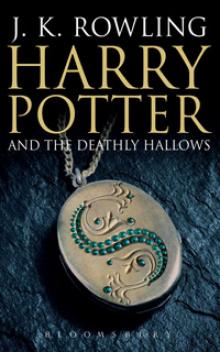 Harry Potter and the Deathly Hallows hp-7
Harry Potter and the Deathly Hallows hp-7 Hogwarts: An Incomplete and Unreliable Guide (Kindle Single) (Pottermore Presents)
Hogwarts: An Incomplete and Unreliable Guide (Kindle Single) (Pottermore Presents)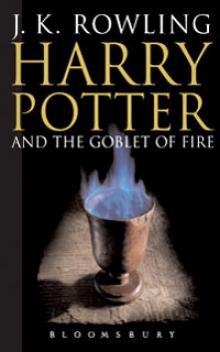 Harry Potter and the Goblet of Fire hp-4
Harry Potter and the Goblet of Fire hp-4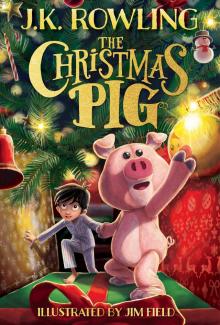 The Christmas Pig
The Christmas Pig Harry Potter and the Sorcerer's Stone
Harry Potter and the Sorcerer's Stone The Order of the Phoenix
The Order of the Phoenix Harry Potter and the Prisoner of Azkaban hp-3
Harry Potter and the Prisoner of Azkaban hp-3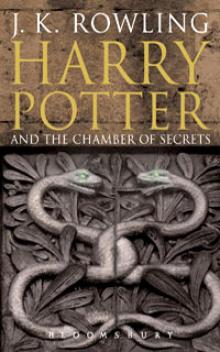 Harry Potter and the Chamber of Secrets hp-2
Harry Potter and the Chamber of Secrets hp-2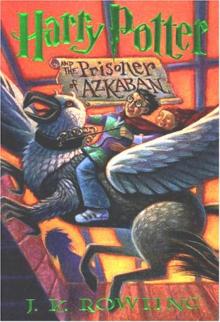 HP 3 - Harry Potter and the Prisoner of Azkaban
HP 3 - Harry Potter and the Prisoner of Azkaban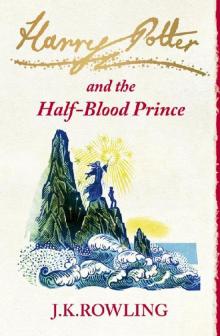 The Half-Blood Prince
The Half-Blood Prince The Hogwarts Collection
The Hogwarts Collection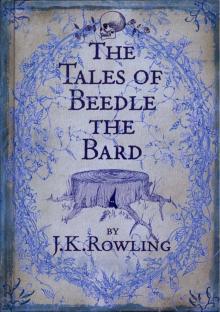 Tales of Beedle the Bard
Tales of Beedle the Bard The Goblet of Fire
The Goblet of Fire Harry Potter and the Half-Blood Prince hp-6
Harry Potter and the Half-Blood Prince hp-6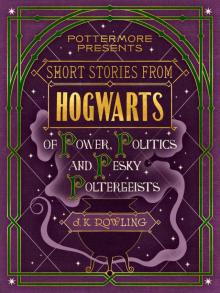 Short Stories from Hogwarts of Power, Politics and Pesky Poltergeists (Kindle Single) (Pottermore Presents)
Short Stories from Hogwarts of Power, Politics and Pesky Poltergeists (Kindle Single) (Pottermore Presents)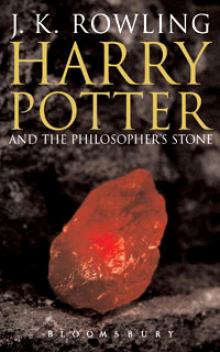 Harry Potter and the Sorcerer's Stone hp-1
Harry Potter and the Sorcerer's Stone hp-1